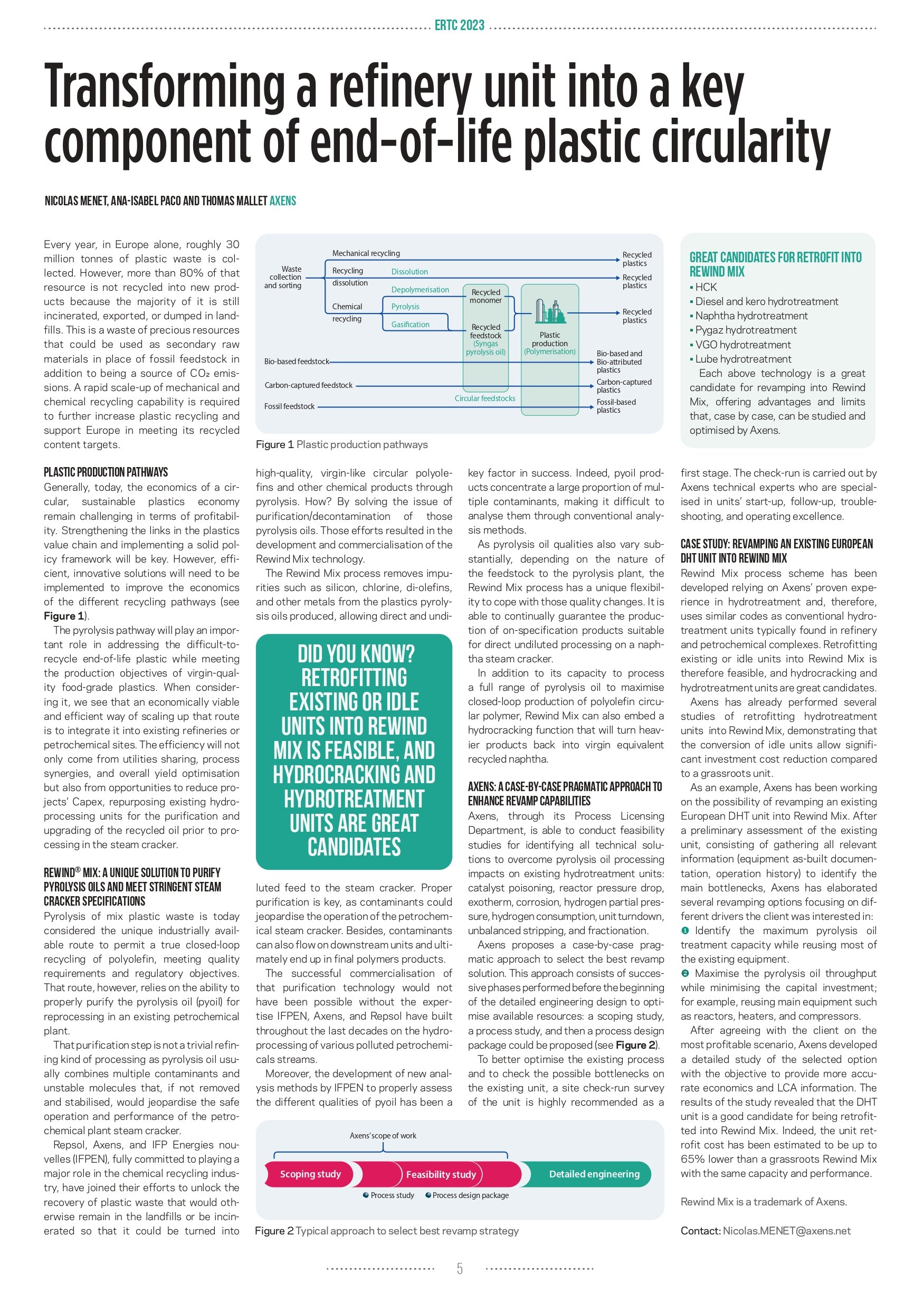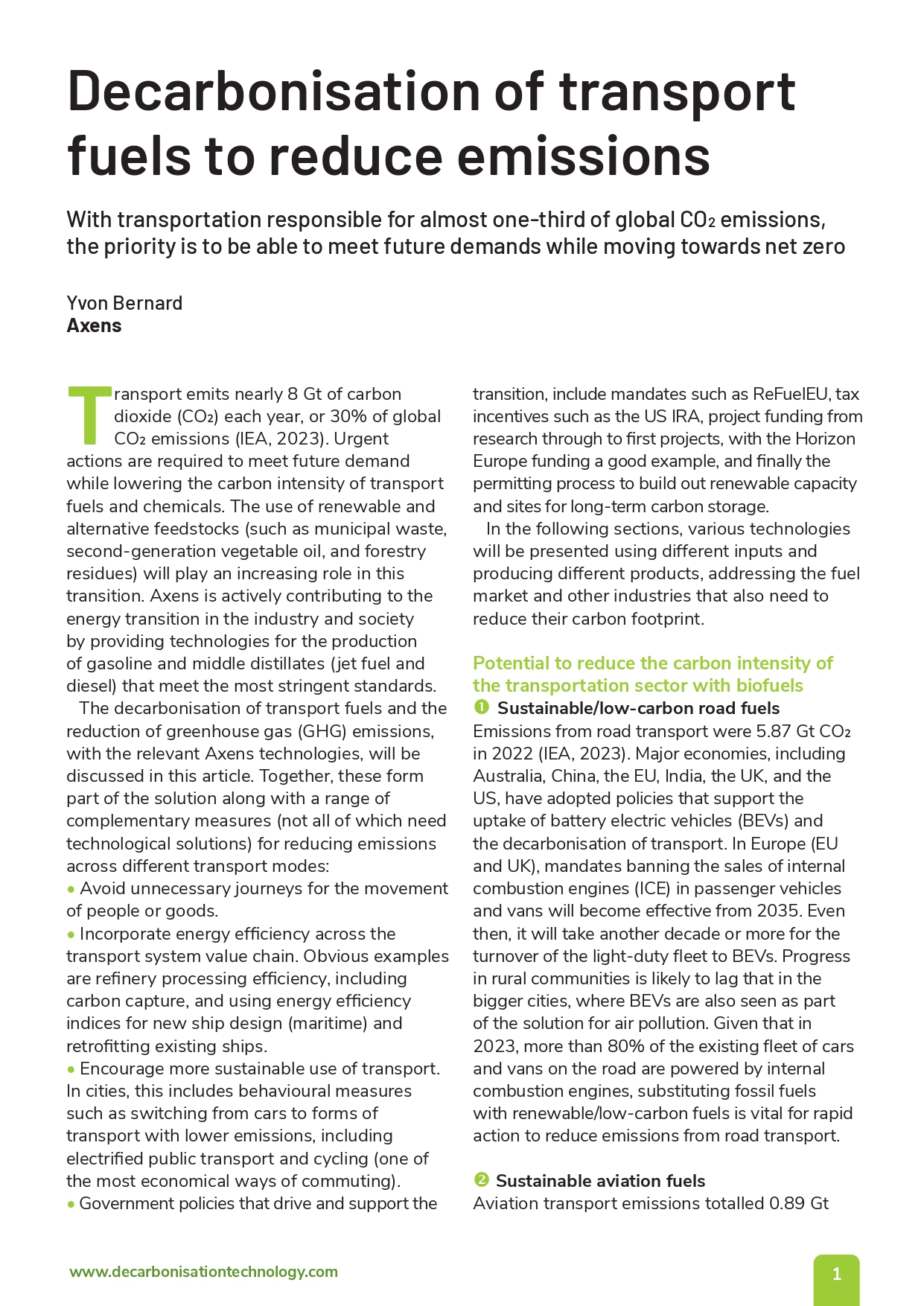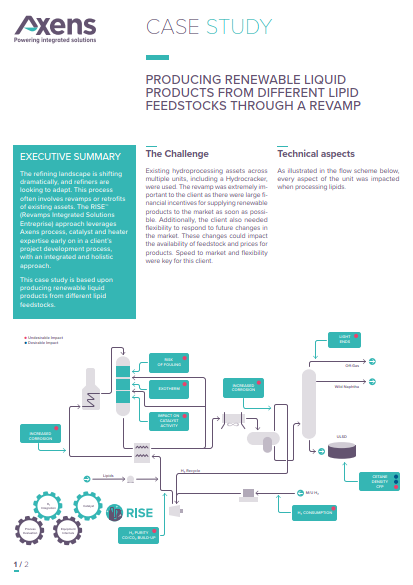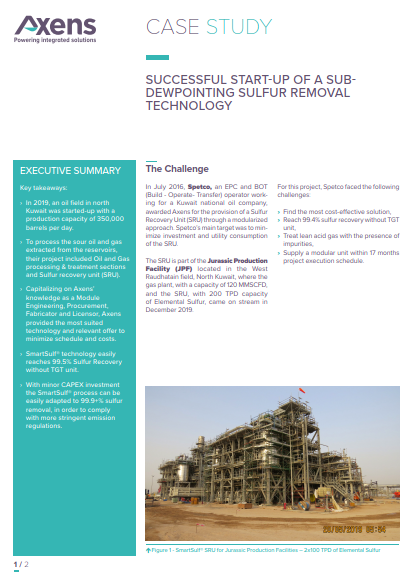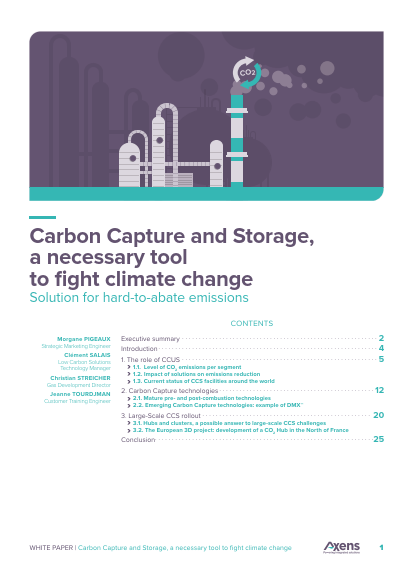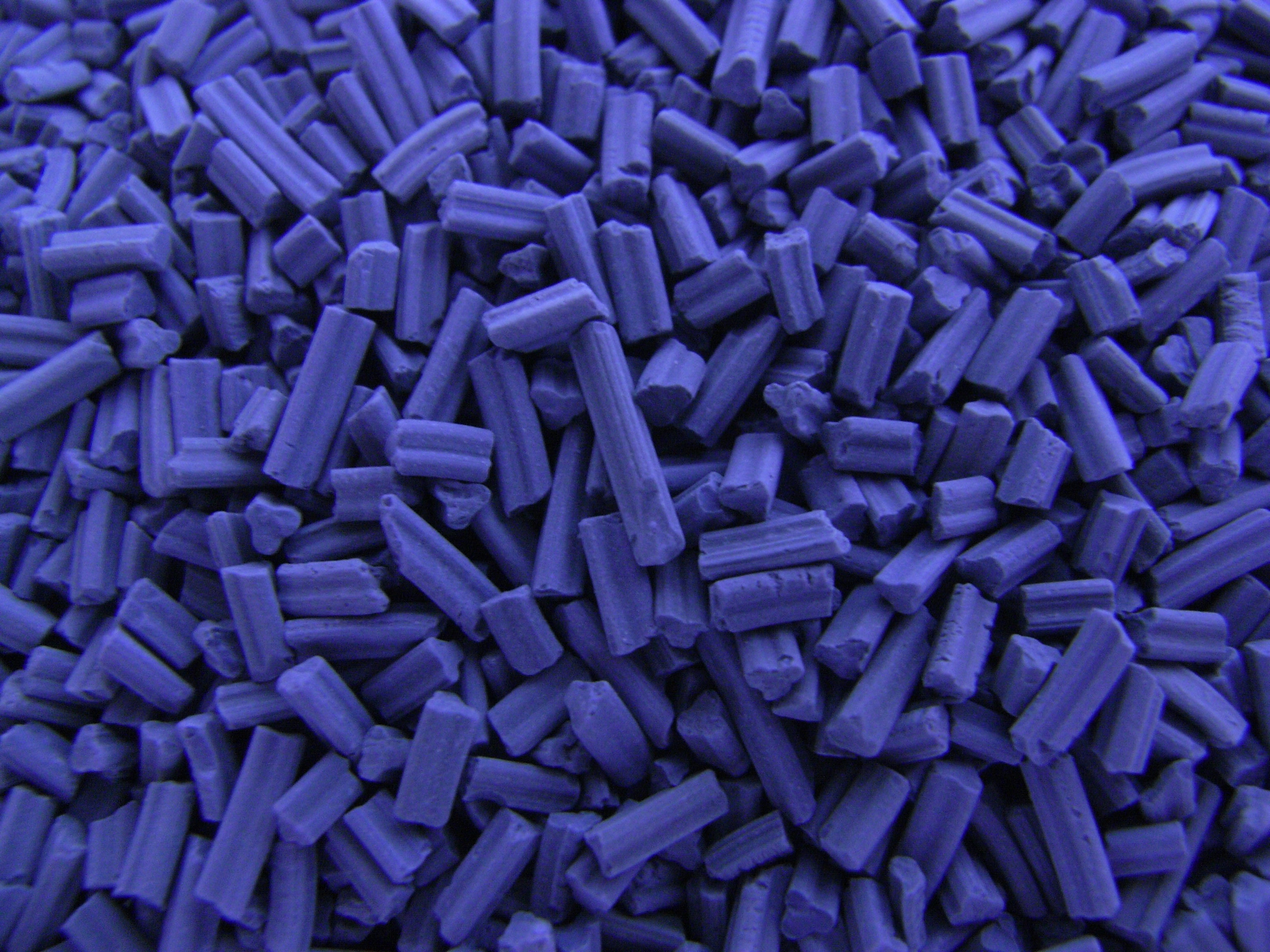Middle Distillates & Naphtha Hydrotreating Catalysts
Axens’ portfolio has a complete, high performance range of hydrotreating catalysts allowing for increasingly more difficult feedstock to be processed without cycle penalty.
Axens’ catalysts also offer higher flexibility, maximum throughput with higher end boiling point and longer cycles. Axens’ catalysts achieve increased activity by maximizing the amount of catalytically most active mixed Molybdenum (Nickel)/Cobalt sites by an improved promotion, an improved dispersion and improved carrier characteristics.
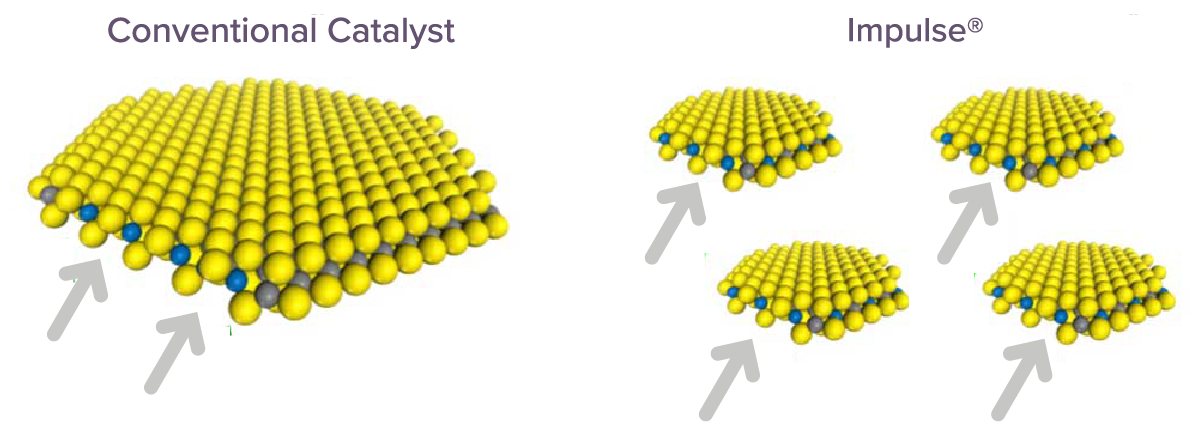
The latest generation of boosted catalyst is called Impulse®.
This hydrotreating catalysts range includes HR 1226, HR 1246, HR 1256, HR 1218, HR 1248, HR 1056, HR 1058 and HRK 1448, covering all domains, from naphtha to VGO hydrotreating and hydrocracking pre-treatment.
On the left, a schematic representation of the dispersion phenomenon: with the same number of atoms, Impulse MoS2 slabs have more action sites.
Impulse® HR 1226
Middle Distillates Ultra Deep Hydrodesulfurization
Impulse® HR 1226 brings very high hydrodesulfurization activity for diesel and kerosene fractions.
Impulse® HR 1246
Middle Distillates Ultra Deep Hydrodesulfurization
For the most difficult hydrodesulfurization of diesel and kerosene fractions, Impulse® HR 1246 is the catalyst of choice.
Impulse® HR 1256
Middle Distillates Ultra Deep Hydrodesulfurization
Impulse® HR 1256 is a boosted CoMo catalyst allowing to operate difficult cocktail of feedstocks blends in the HDS unit.
Impulse® HR 1218
Middle Distillates Ultra Deep Hydrodesulfurization
Impulse® HR 1218 presents very high denitrification and aromatic hydrogenation activities, as well as a superior desulfurization activity as compared with previous generation catalysts.
Impulse® HR 1248
Middle Distillates Ultra Deep Hydrodesulfurization
Impulse® HR 1248 is the most active NiMo type catalyst. It offers very high denitrification and maximum aromatic hydrogenation activity, as well as a superior desulfurization activity as compared with previous generation catalysts.
HR 626
Distillates Ultra Deep Hydrodesulfurization.
HR 626 is a high surface area, stabilized CoMo catalyst with a highly dispersed active phase. This combination of characteristics, along with its controled pore structure tuned for ULSD service, ensures a highly efficient use of the active metal phase, with a maximized amount of Advanced Catalytic Engineering (ACE®) active sites.
HR 608
Petroleum cuts Deep Hydrorefining.
HR 608 presents very high denitrification and aromatic hydrogenation activities, as well as a superior desulfurization activity as compared with previous generation catalysts.
HR 648
Diesel cuts Deep Hydrorefining.
HR 648 has been designed and optimized for the most severe hydrotreatment service encountered when processing middle distillate cuts containing large amounts of cracked materials under medium to high pressure conditions.
HR 638
Upcycled Catalysts for Naphtha Hydrotreatment Applications
HR 638 was developed to address the new challenges in modern naphtha hydrotreatment. It can be used to pre-treat a wide range of feedstocks, from straightrun naphtha to visbreaker or cracked naphtha (up to 100%)
HR 618
Naphtha Fractions Ultra Deep Hydrodesulfurization.
HR 618 is a recently-developed NiMo type catalyst, used for the hydrodesulfurization and hydrotreatment of naphtha fractions. In addition to a high hydrodesulfurization activity, HR 618 optimized carrier texture and formulation also provides to the catalyst an exceptional stability.
HR 955
Naphta Hydrotreatment of cuts containing Olefins.
HR 955 is a NiMo type catalyst to be used in front of hydrotreatment catalysts for Diolefins saturation. HR 955 special design limits the polymerization of olefins and diolefins and thus, the gums formation, even at low hydrogen partial pressure. The resulting advantage is longer cycle of operation.
HR 608
Petroleum cuts Deep Hydrorefining.
HR 608 presents very high denitrification and aromatic hydrogenation activities, as well as a superior desulfurization activity as compared with previous generation catalysts.
HR 648
Diesel cuts Deep Hydrorefining.
HR 648 has been designed and optimized for the most severe hydrotreatment service encountered when processing middle distillate cuts containing large amounts of cracked materials under medium to high pressure conditions.
Maximize the utilization of Impulse® Catalysts with Revival®
After regeneration by coke burning, Impulse® Catalysts can be used again directly, however they will suffer from a deficit of activity as compared with a fresh batch of catalysts.
Revival® is an Axens proprietary process of chemical and thermal treatment allowing regenerated Hydroprocessing and Hydrocracking catalysts to recover their original activity. Thanks to a second stage treatment, it allows regenerated Impulse® Catalysts to come back to their original activity.
Key advantages:
- Activity recovery above 90% as compared with fresh catalysts
- No impact on the mechanical properties of the catalysts
- Catalysts handling and activation procedures are similar to fresh catalysts
Depending on the history of the used catalyst, Axens experts, through Revival® offer, guarantee customer performance targets by conducting engineering studies and surveys to maximize the catalysts reuse.
You might also be interested in
Speciality Bed Topping
In Hydroprocessing reactors, pressure drop is mainly induced by particulates build-up and gum formations. Pressure drop not only affect the capacity of the unit but can also have detrimental impact on the distribution.
DiscoverGums & Polymer formation control
Pressure drop induced by gum formation is frequently encountered in unit processing some cracked feedstock derived from various conversion processes. The olefins and mainly the diolefins contained in these streams tend to polymerize and get oxidized forming a crust which deposit in the upper layers of the reactor.
DiscoverSilica Management
Silicon is a well-known widespread poison for hydroprocessing catalysts. The main contributor to silicon is the Delayed Coker. In addition, there is a general tendency in the oil production industry to use more silicon-based flow improvers.
DiscoverContact Us
Please fill in the form below to get in touch with us

